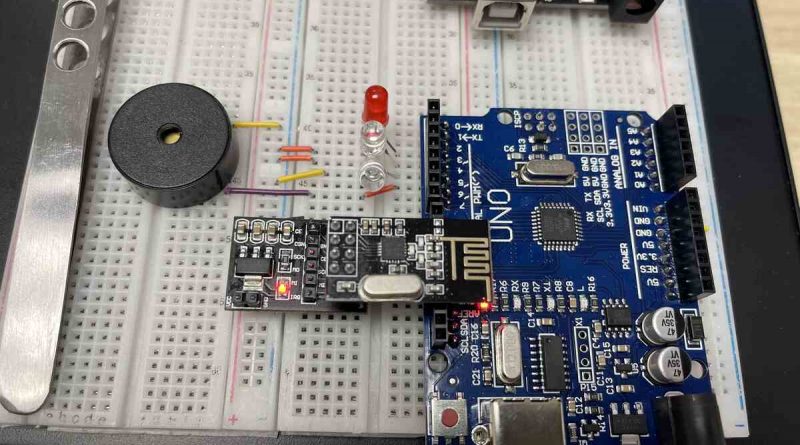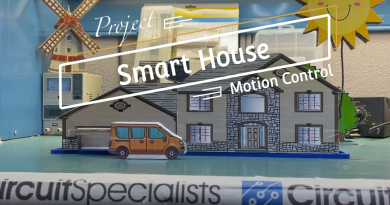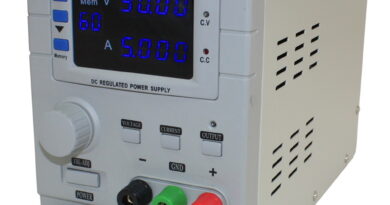BREADBOARD COMPONENTS & SUPPLIES
Whether you’re a seasoned electronics enthusiast or new to the world of electronic tinkering, breadboards are helpful tools for quick and temporary setups without the need for soldering. Understanding the world of breadboard components and supplies lays the foundation for makers of all levels to bring innovative ideas to life.
WHAT IS A BREADBOARD?
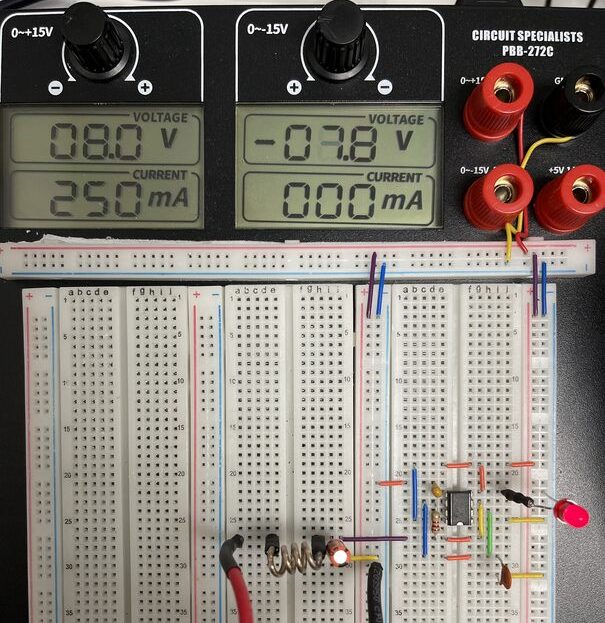
Breadboards are useful prototyping tools for hobbyists, students, and engineers alike. Breadboards are solderless, reusable protoboards used to build and test circuits. Typically, they have a grid of holes and metal clips for electrical connections. By inserting components into the holes, users can experiment with temporary circuits. Beyond prototyping, breadboards and kits also make for fun and accessible learning tools for students of all ages.
BREADBOARD POWER SUPPLY
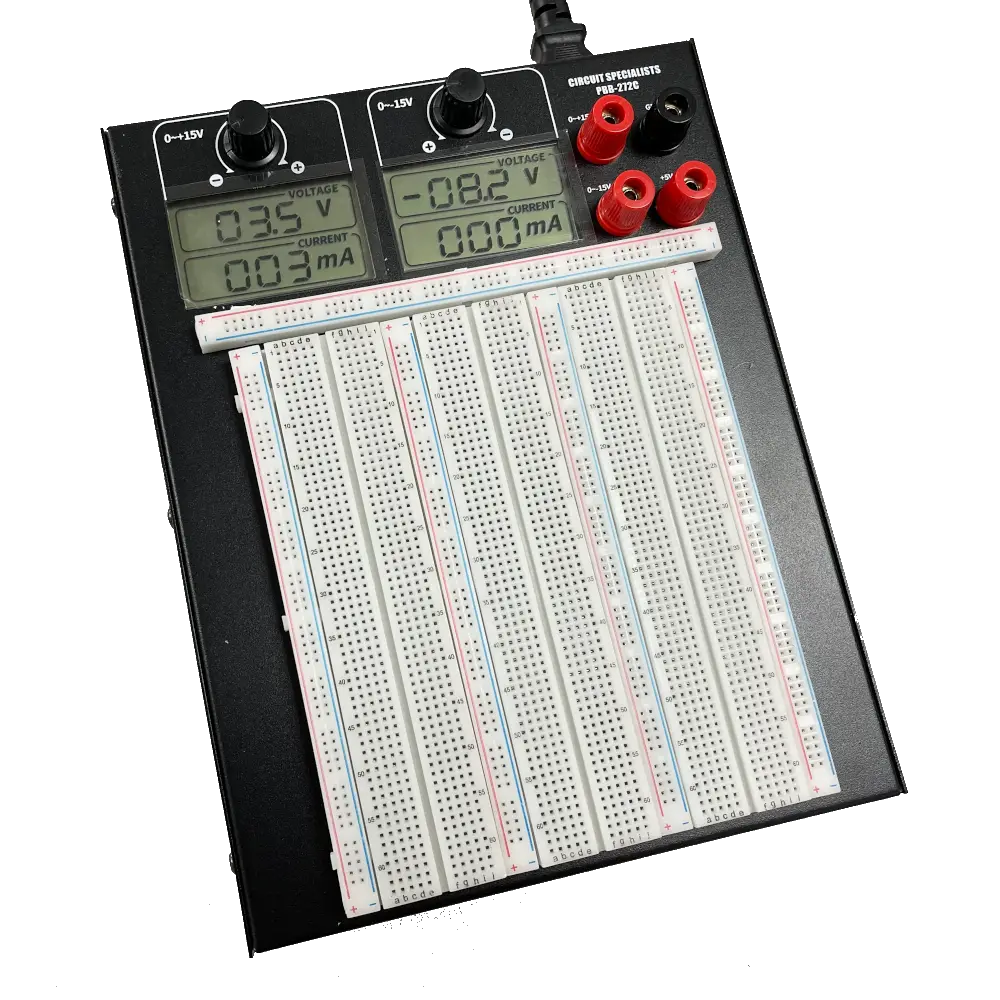
A breadboard power supply is like a reliable engine that powers your electronic creations with a stable and consistent energy flow. Circuits operate reliably during testing and experimentation when consistently supplying the correct voltage and current.
Some breadboards come with built-in power supply modules, such as the 15V Powdered Solderless Breadboard Kit. However, standard breadboards usually require a battery and jumper wires to connect to power.
BATTERY SNAPS AND CLIPS
Battery snaps and clips are used to power breadboard circuits with portable energy sources. They make connecting batteries to your breadboard effortless. Simply attach the battery snap to the positive and negative terminals of the battery and then connect it to the breadboard. Using a portable power source makes projects mobile and independent of a wall outlet.
JUMPER WIRES AND BREADBOARD WIRES
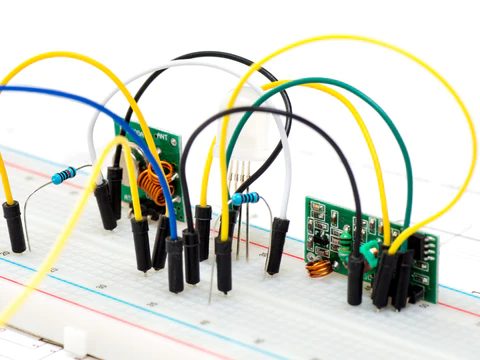
A versatile breadboard component to add to your kit is jumper wires. Think of these as the little bridges that connect different breadboard components. The three most common breadboard wires are male-to-male, male-to-female, and female-to-female wires.
Used for component-to-component connections within the same breadboard, male-to-male wires have a male pin on both ends, connecting them directly between two points on the breadboard.
On the other hand, female-to-female wires connect between different sections of the same breadboard. They can also interconnect multiple breadboards, which is helpful for larger projects.
BINDING POSTS AND BANANA PLUGS
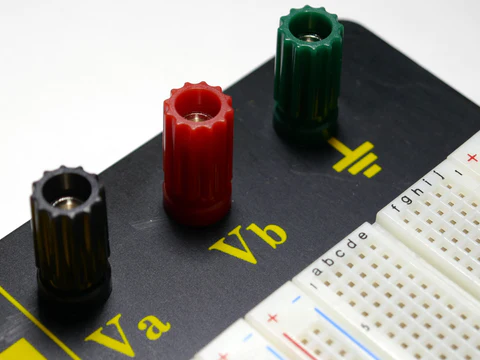
Binding posts are little devices that help hold electronic components securely in place on a breadboard. They look like tiny screws with a nut; you can insert them into the breadboard’s holes. Once they’re in, you can attach wires, resistors, capacitors, and even banana plugs to them, keeping everything nice and stable.
Speaking of banana plugs, these special plugs are made to fit into binding posts, like how a puzzle piece fits into its place. They create a strong connection that you can easily plug in and unplug as needed.
THROUGH-HOLE BREADBOARD COMPONENTS
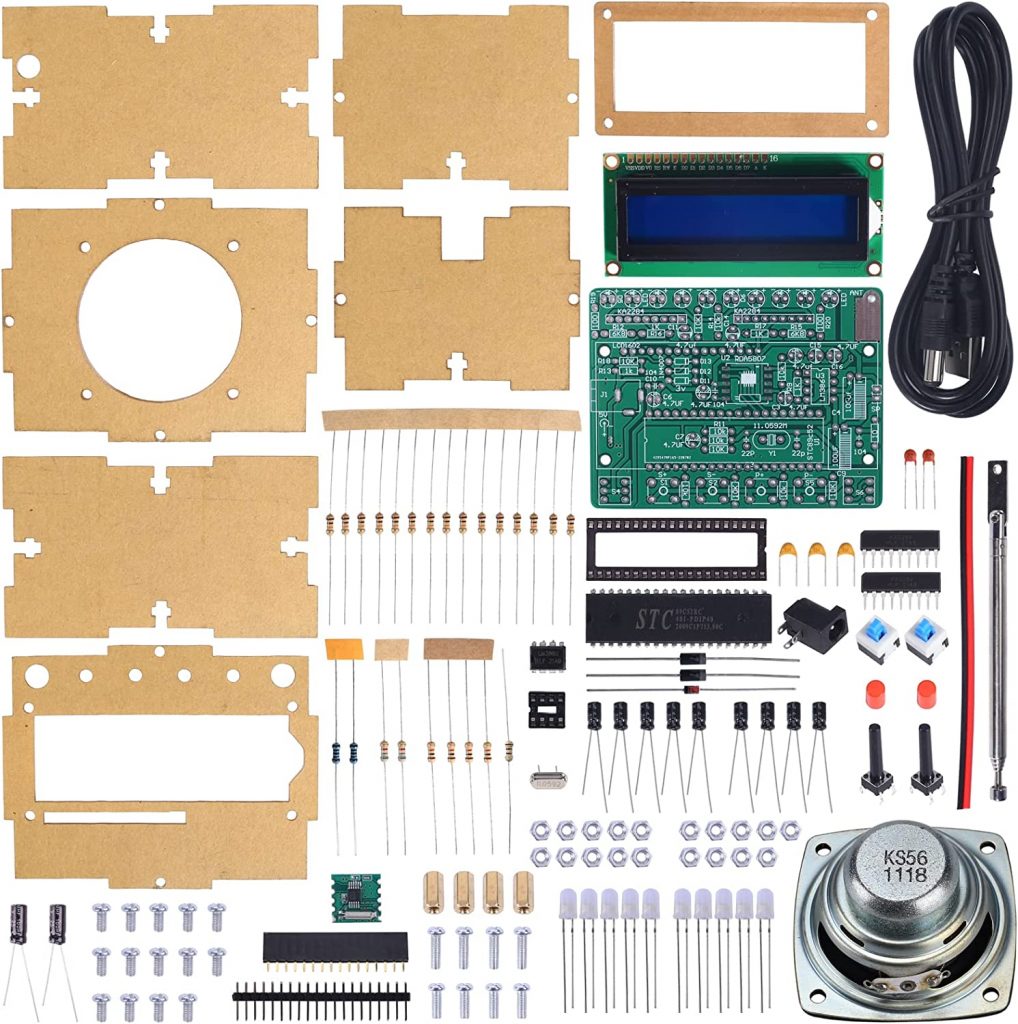
Through-hole components bring ease and flexibility when creating electronic circuits. Thanks to their leads that can be inserted into the holes of a breadboard, these handy parts form a secure connection without any soldering. We’ll take a closer look at specific through-hole breadboard components including, limited to resistors, capacitors, and more.
RESISTORS
Resistors play two crucial roles: limiting the current flow in a circuit and setting specific component values. Think of them as the traffic cops of electrical current, controlling its flow and preventing circuits from becoming overwhelmed.
By providing resistance and limiting the current flow, resistors protect sensitive components from excessive current, preventing damage and securing a stable operation.
In addition, resistors also specify the values of other breadboard components like capacitors and transistors. By setting the proper resistance values, engineers can fine-tune the behavior and performance of the entire circuit to achieve diverse functionalities and characteristics.
Fixed resistors have a predetermined resistance value.
In cases where the resistance needs to be adjusted, variable resistors, known as potentiometers or “pots,” allow users to adjust the resistance manually. These enable users to augment volume controls, dimmer switches, and other adjustable settings.
CAPACITOR
Capacitors store and release electrical charges when needed, providing a burst of power or a smoothing effect in circuits. Capacitors come in a variety of types catering to different projects.
For example, tantalum capacitors are perfect when space is limited due to their high capacitance in compact sizes, while electrolytic capacitors are ideal for larger projects that require power filtering and energy storage.
SWITCHES
In breadboarding, switches are no different than the button on your remote. They determine if a circuit is open or closed, allowing for or stopping the electrical flow. Some different types of switches are:
- Push-button: Like a doorbell, these switches stay on only while they are pressed.
- Toggle switches: These flip on or off, similar to a light switch.
- Slide switches: As the name conveys, these switches slide into different positions allowing for different functions and modes.
POTENTIOMETERS
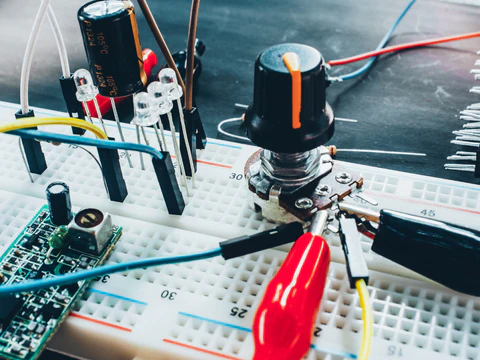
Potentiometers, or variable resistors, are another option for voltage and current adjustment. These components offer more precise control, functioning like a volume knob on a speaker.
Your project will determine the configuration of potentiometers best suited for your needs. The three most common ones are:
- Single-turn potentiometers: These provide a single complete rotation to adjust the resistance, making them suitable for most common tasks like volume controls, light dimming, and motor speed adjustments.
- Multi-turn potentiometers: These variable resistors are best for higher precision and finer adjustments as they offer multiple rotations to change the resistance. Typically, they are used for scientific instruments, calibration, and measurement equipment.
- Trimmer potentiometers: Though less widely used, trimmers offer precise calibration of circuits on printed circuit boards (PCBs) and other electronics. Trimmers tend to be used during the manufacturing and testing of electronic circuits.
DIODES
Diodes allow current flow in one direction only, like a valve that permits water to flow in one direction but blocks it in the opposite direction. A type of diode you’re probably familiar with is the light-emitting diode or LED. LEDs produce light when the current flows forward. Diodes can also convert alternating current (AC) into direct current (DC) through a process called rectification. Rectification is essential for powering most electronics in everyday life.
MORE BREADBOARDING ACCESSORIES
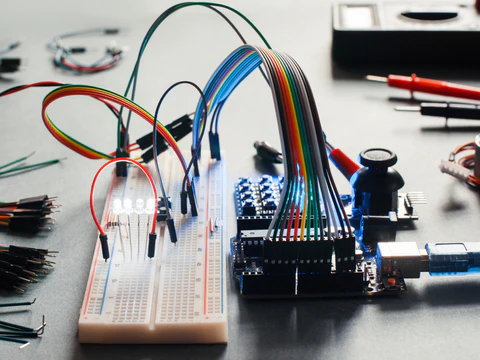
Breadboards offer endless opportunities for growth, augmentation, and customization. Many accessories help with organization and offer convenience for your projects, such as:
- IC Adapters: With a secure fit and effortless removal, these adapters allow for easy testing of integrated circuits on breadboards
- Prototyping Shields: Great for complex projects involving microcontrollers like Arduino, these shields provide additional space and functionality.
- Breadboard Mounting Plates and Adhesive Feet: These accessories keep your breadboard stable during prototyping, assuring accurate readings by preventing accidental disconnections.
- Storage Cases: Streamline your projects by reducing clutter. These cases organize your components and accessories with storage cases designed specifically for breadboarding tools.
- Inductors and Motors: Enabling the creation of complex circuits and automation, inductors are crucial for energy storage and filtering, while motors add mechanical motion and dynamic capabilities to your projects.
GET STARTED WITH A BREADBOARD KIT
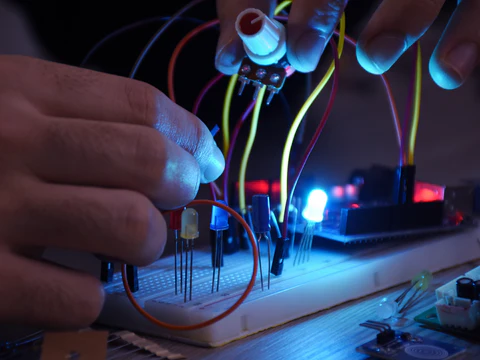
Knowing where to start with so many different breadboard components and accessories may be overwhelming. A breadboard kit is a fantastic tool to kick-start your electronic prototyping journey. These comprehensive kits provide a perfect introduction to breadboarding, providing hands-on learning and a variety of components and equipment.
Some of our favorite breadboarding kits include:
- ARD-02 201 Arduino Basics Starter Kit: This fun kit needs prior electronics experience. The kit includes everything needed to build 15 projects across eight categories, covering temperature, LEDs, and more.
- ElectroBOOM 101 Kit: The kit is perfect for getting started with prototyping and experimenting with various electronic components and includes a 15V-powered solderless breadboard and multimeter.
- CSI-01-KIT Essential Electronics Parts Kit: This comprehensive kit is great for beginners and seasoned electronics enthusiasts alike and offers over 50% savings by building the breadboard components together.
As far as breadboard kits go, there are many wonderful options to level up your breadboarding and prototyping skills, no matter your level.
TO WRAP UP
Breadboard opens up the exciting world of electronics for electronics enthusiasts and beginners alike. Knowing the common breadboard components and supplies can help bring creativity and flexibility to your breadboarding projects.
Still have questions? Our specialists can help! Contact us at 1-800-528-1417 or sales@circuitspecialists.com.
